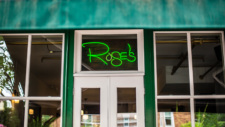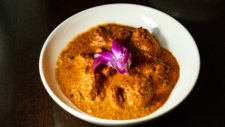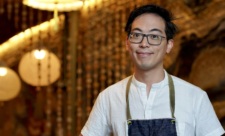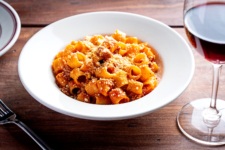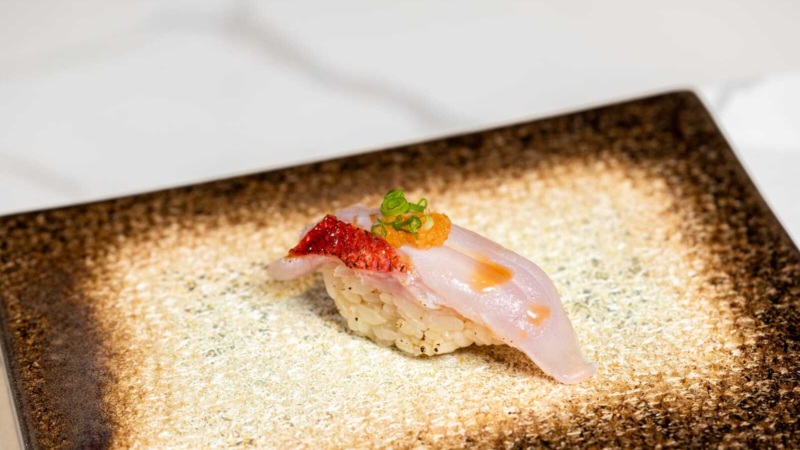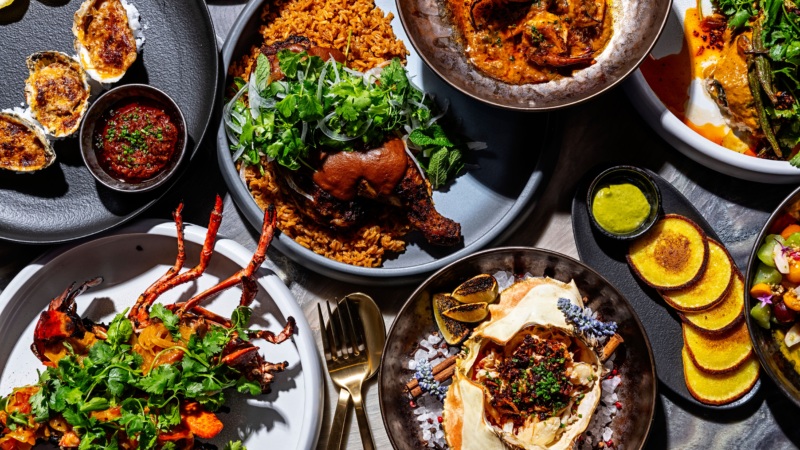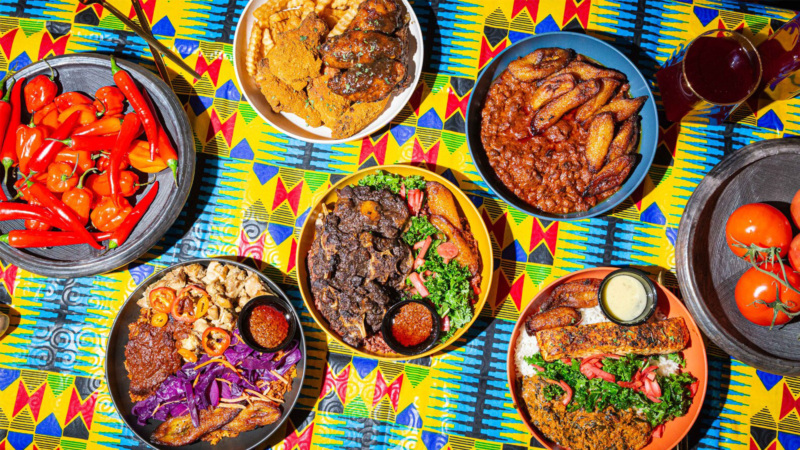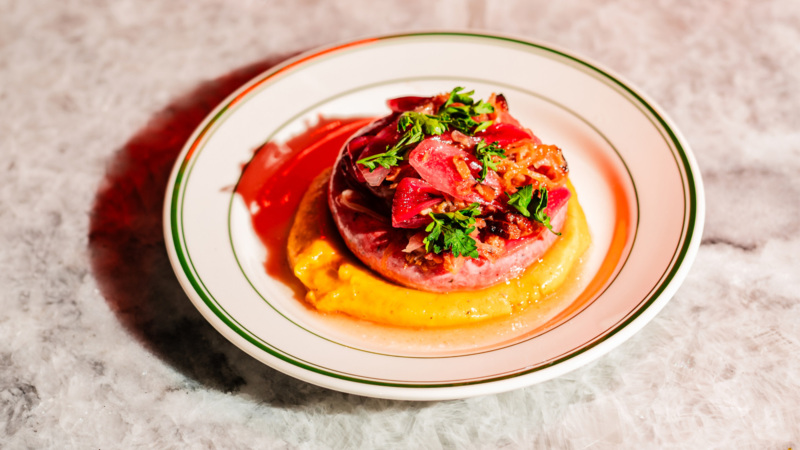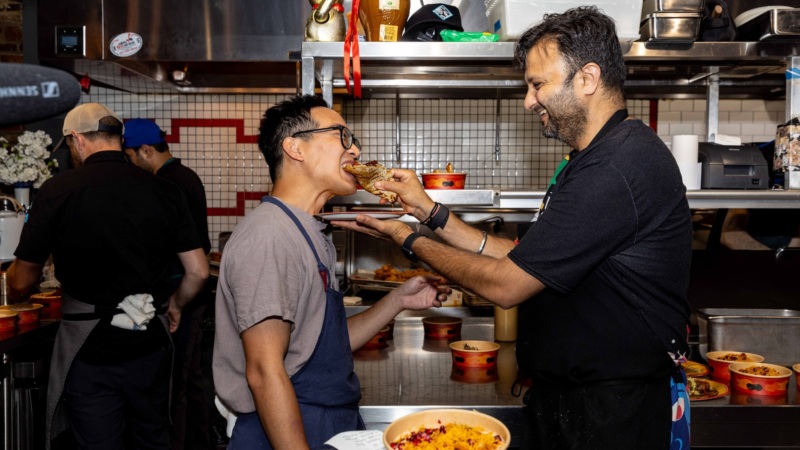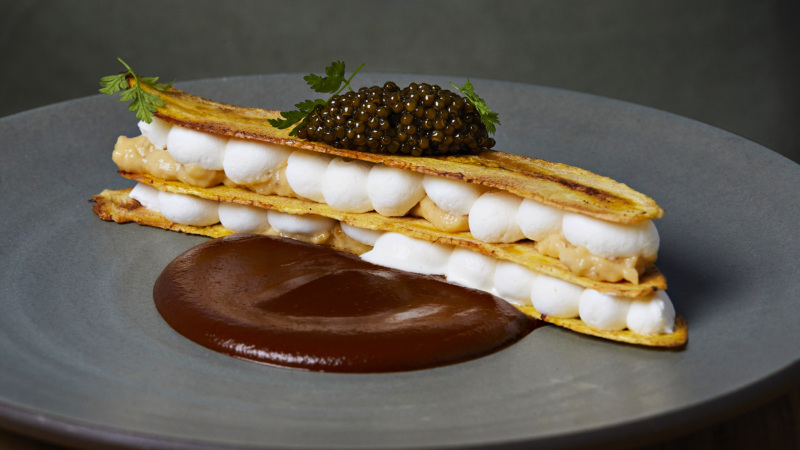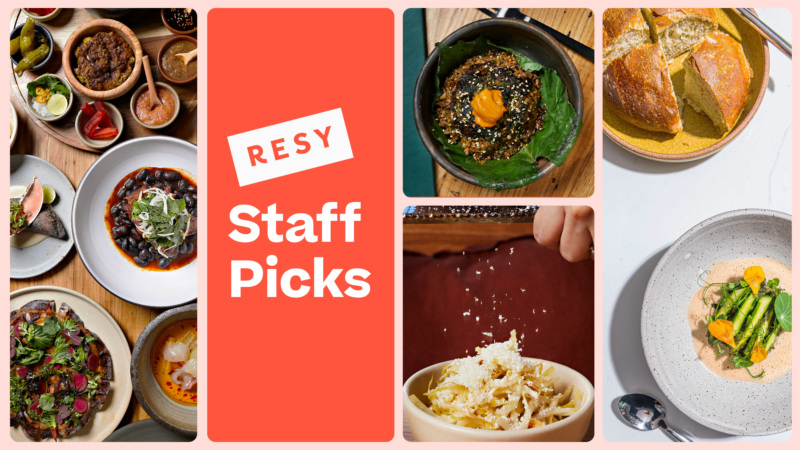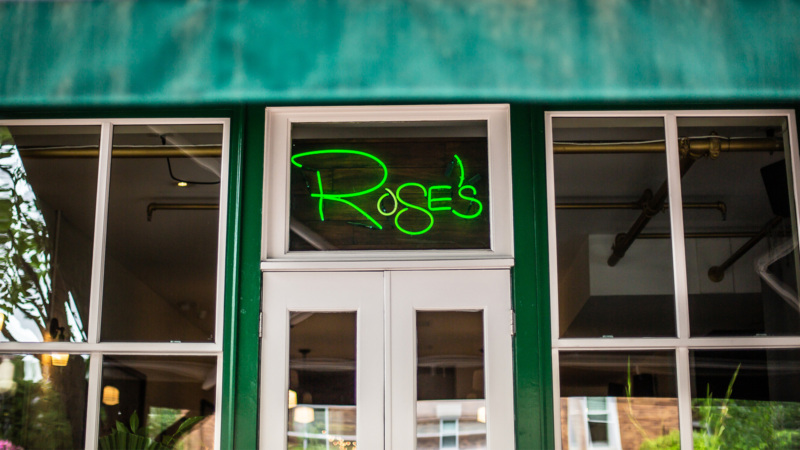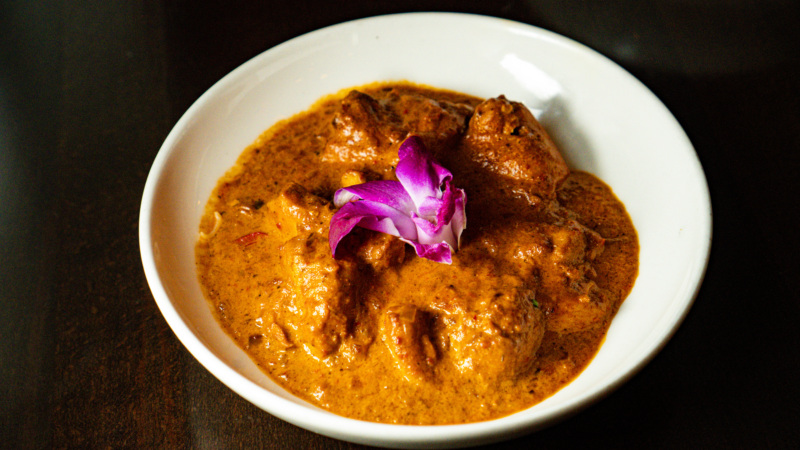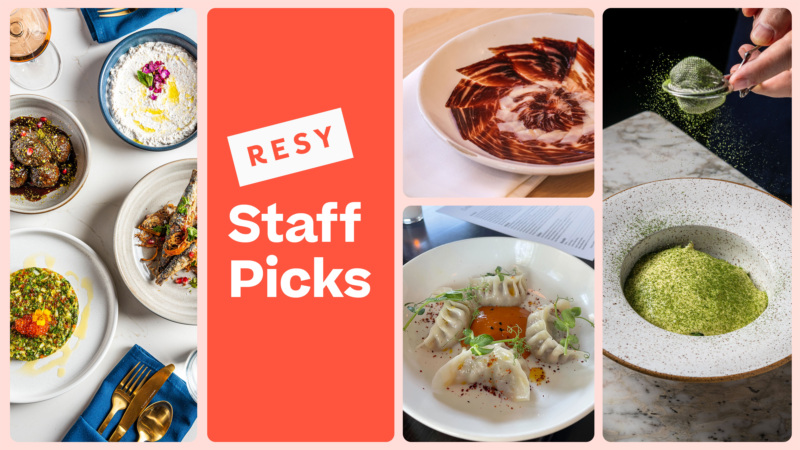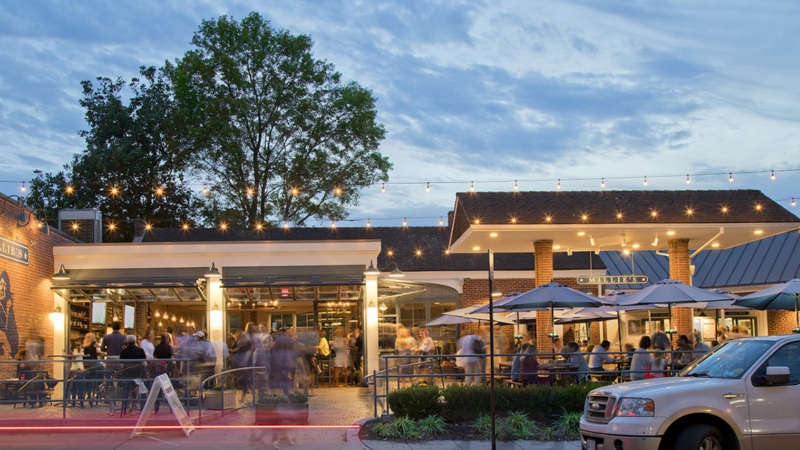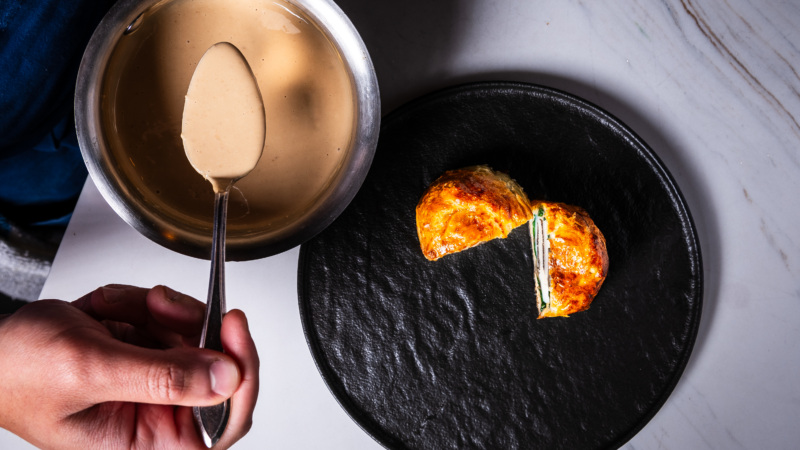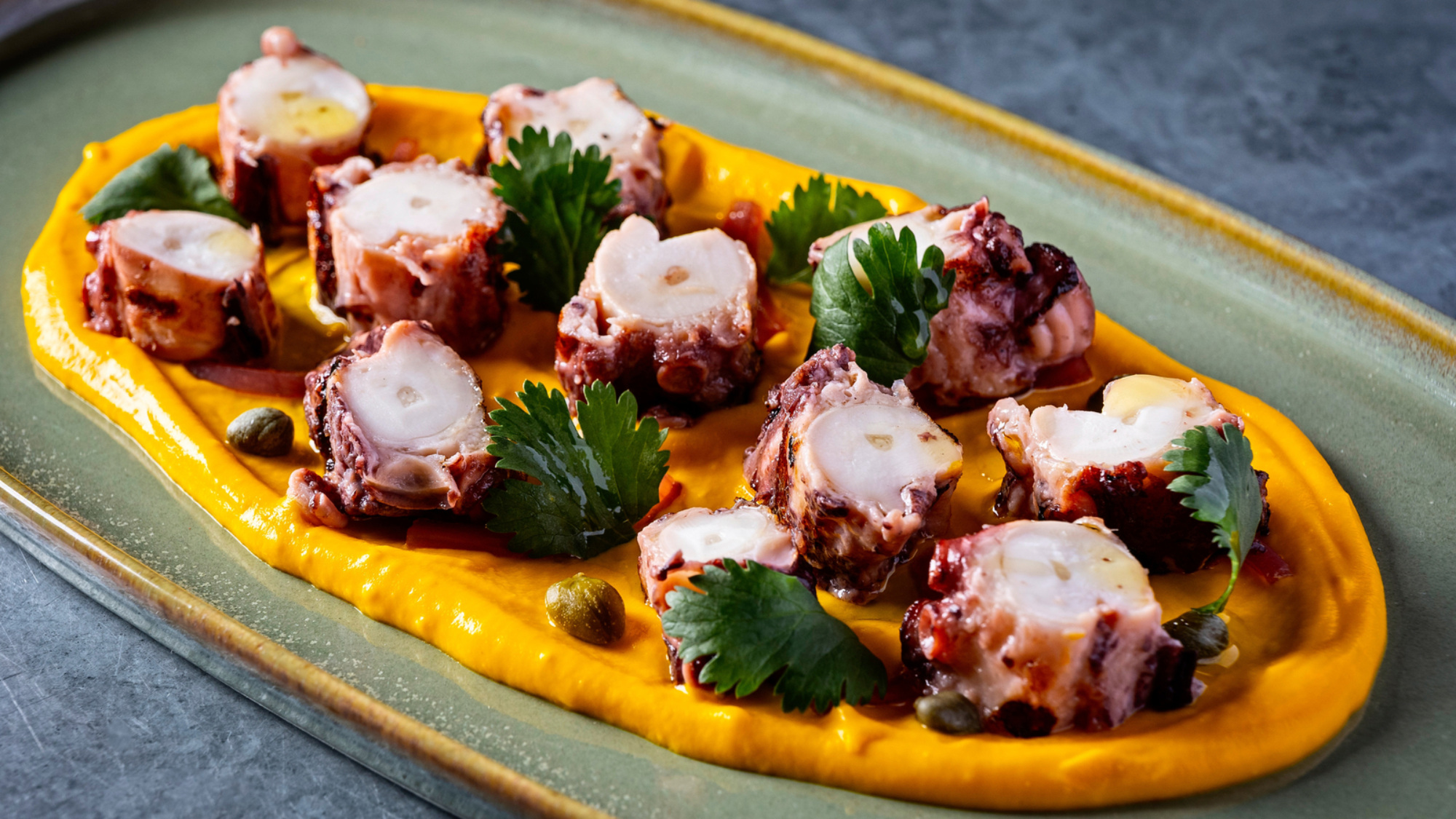
Resy Spotlight Washington D.C.
At Namak, One Restaurateur Bet on His Own Culture – And Is Winning
Most restaurateurs can only dream of basking in the decade-long success of a restaurant like Mintwood Place, the now-closed French restaurant in Adams Morgan that opened in 2012 to huge acclaim. So it came as a surprise when they closed their doors back in the summer of 2022. But co-owners, Saied Azali and John Cidre wanted to take a chance and have bet on the success of what is now their newly-opened restaurant, Namak.
A change in pace from the cooking of its predecessor, Namak focuses on the cuisine of the Eastern Mediterranean, rooted in Turkish dishes with Greek and Iranian influences. Azali knew it would be a risk to shutter the beloved French-American eatery to introduce a new concept to the neighborhood, but as he puts it, “The risk was worth it because it’s part of my dream. It’s something I wanted to do.”
Azali, who also owns the acclaimed French-American restaurant Convivial and the newly reinvigorated Japanese favorite Perry’s, had been thinking about opening a restaurant that represented the foodways of his own culture – Iran. But it was just an idea until the world shut down from the pandemic.
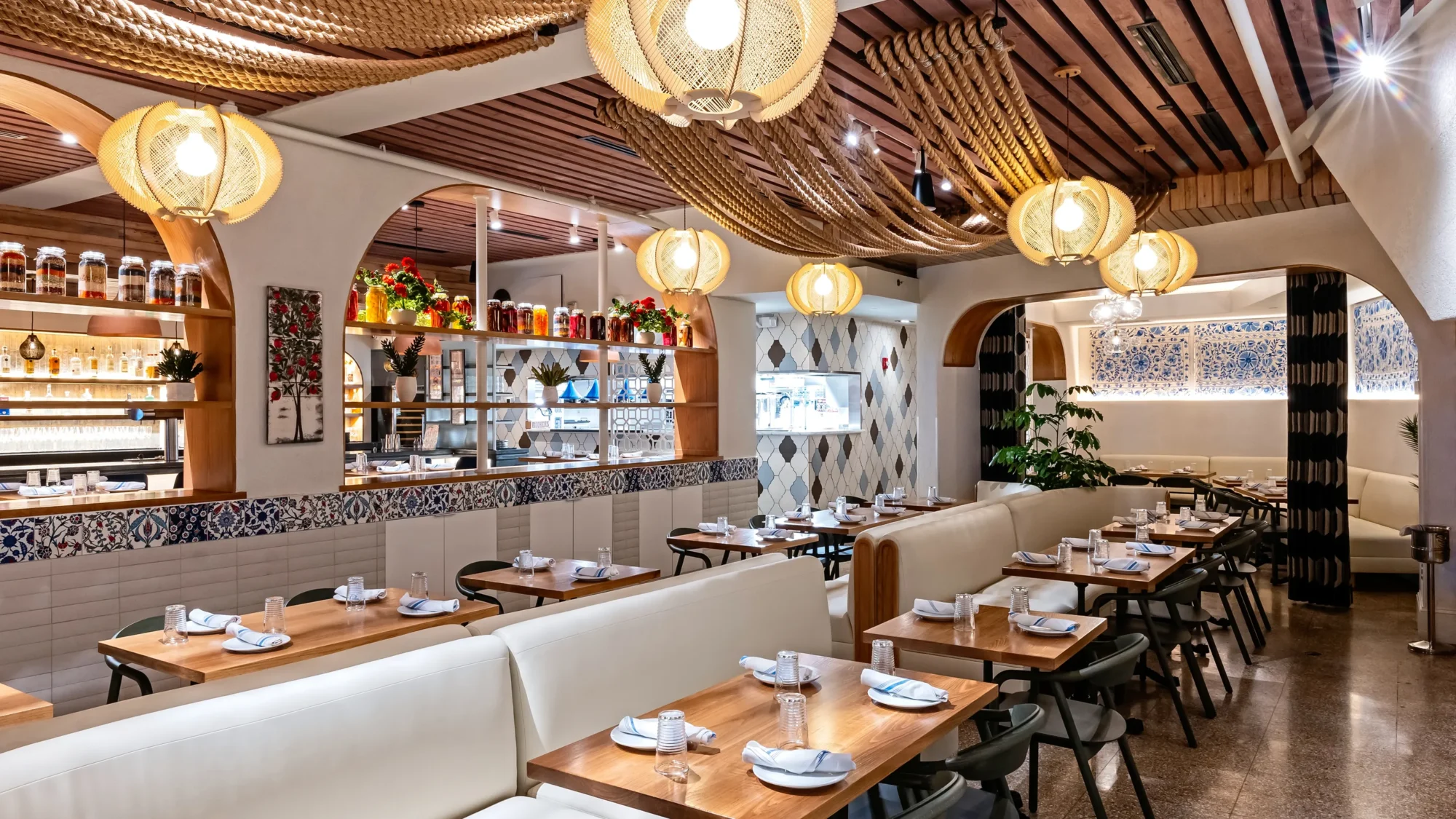

At the height of the social distancing policies, Azali had temporarily closed all three of his restaurants and would take walks around his neighborhood for hours to keep busy. During that time, he reflected on the changing palates of Washingtonians and the uptick of women residents, particularly in Adams Morgan. He thought this demographic of high-earning women, many with young families, open to trying new cuisines, would embrace Iranian food.
Accompanied by a headhunter, Azali spent nearly a year searching for an Iranian chef but couldn’t find one that was available. Then Turkish chef, Tolgahan Gulyiyen, was brought to Azali’s attention. Gulyiyen immediately stood out as an expert; he’d grown up in the restaurant industry, his father cooked for Turkey’s former Prime Minister, he attended a Turkish culinary school and had even spent time in the kitchens of restaurants in New York and D.C., including at Zaytinya.
Chef Gulyiyen impressed Azali immediately. “During the time of the Silk Road,” Azali points out, “all of these countries [were connected], sometimes Turkey was part of Iran and sometimes Iran was part of Turkey because they would occupy each other. The cuisine always travelled to each other, so we use very similar ingredients.”
For example, Turkish and Iranian foods use a type of lamb distinct from the kind typically found in most American and European dishes – a lamb with more fat in the rump and tail that is used to cook with, imparting incredible flavor when prepared properly.
Not only were there enough similarities between Turkish and Iranian dishes for Azali to feel confident, Gulyiyen was also open-minded to various inspirations. The pair travelled through Turkey to sample various national dishes and even cuisines from other immigrant communities that had settled in Turkey. The result is a menu that leans towards the Eastern Mediterranean, emphasizing the best of Gulyiyen and Azali’s respective national cuisines with a judicious sprinkle of dishes from neighboring cultures like Greece, Armenia, and the Balkans.
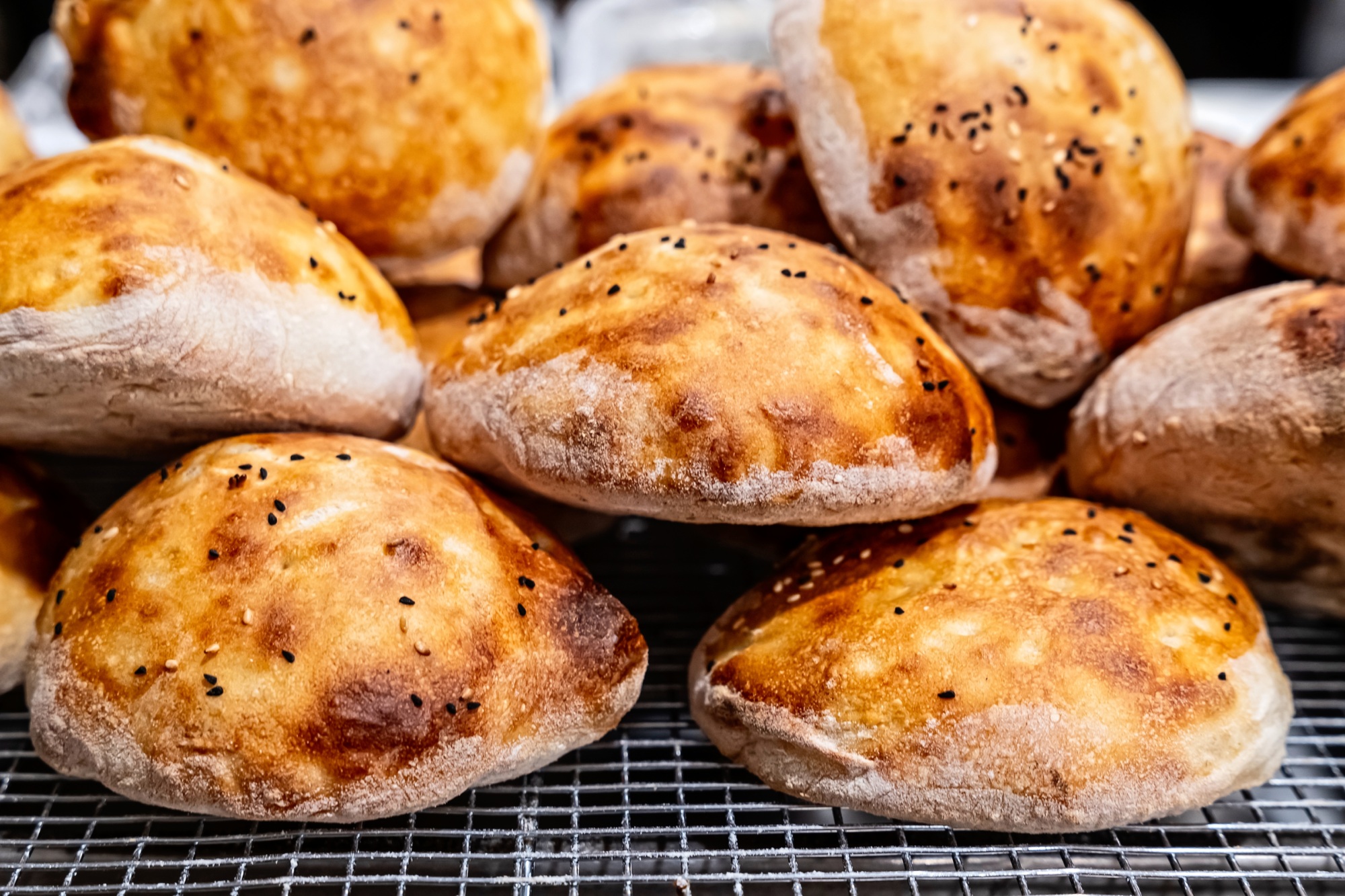
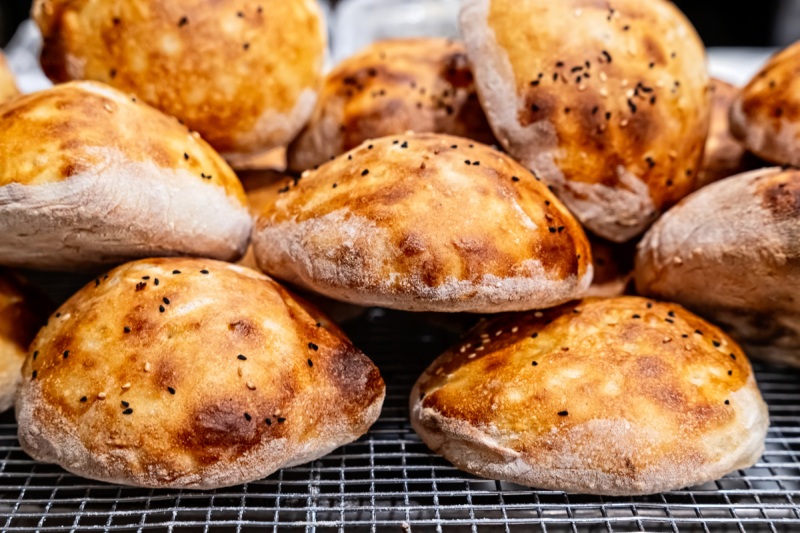
As they developed Namak’s menu, Azali and his business partner, Cidre, also focused on correcting some of the issues they’d had at Mintwood Place.
Although the restaurants bear the same address, the experience is diametric. Azali and Cidre outfitted the dining area to address previous noise concerns. Now, the sound doesn’t bounce back and forth anymore, making the atmosphere better for conversations. They’ve also arranged the seating so that even though fewer people can fit into the space, it’s now more spacious and easier to accommodate families.
Guests may notice the updated decor sourced from around the world, including pieces from Turkey and Greece. Twisted ropes and chocolate-brown wooden panels form a symmetrical pattern along the ceiling; yellow bulbs sitting in basket-like pendant lamp shades cast a soft glow on the neutral-toned furniture and walls. The upshot is an ambience that feels coastal and cozy.
The new restaurant also needed a new kitchen setup. “We used to have a wood-burning grill and a wood-burning oven; it’s very hard to cook with wood because it tastes incredibly good, but it’s easy to burn, it’s easy to overcook, and easy to undercook,” Azali says. “Every day the wood has a different life. Sometimes the wood is too dry, sometimes it’s too wet; so, the timing changes constantly from one piece of wood to another piece of wood to cook with.” As a result, the pair have upgraded the oven and grills to new commercial equipment that produces more consistent results.
With the setting and menu in place, now all the restaurant needed was a name. Meaning ‘salt’ in Farsi, the name Namak is a nod to the region’s legendary hospitality – historically, salt was an expensive item, and hosts offered the precious condiment to guests as a sign that they appreciated their company. Now, Namak was ready for business, opening to their first guests on April 2.
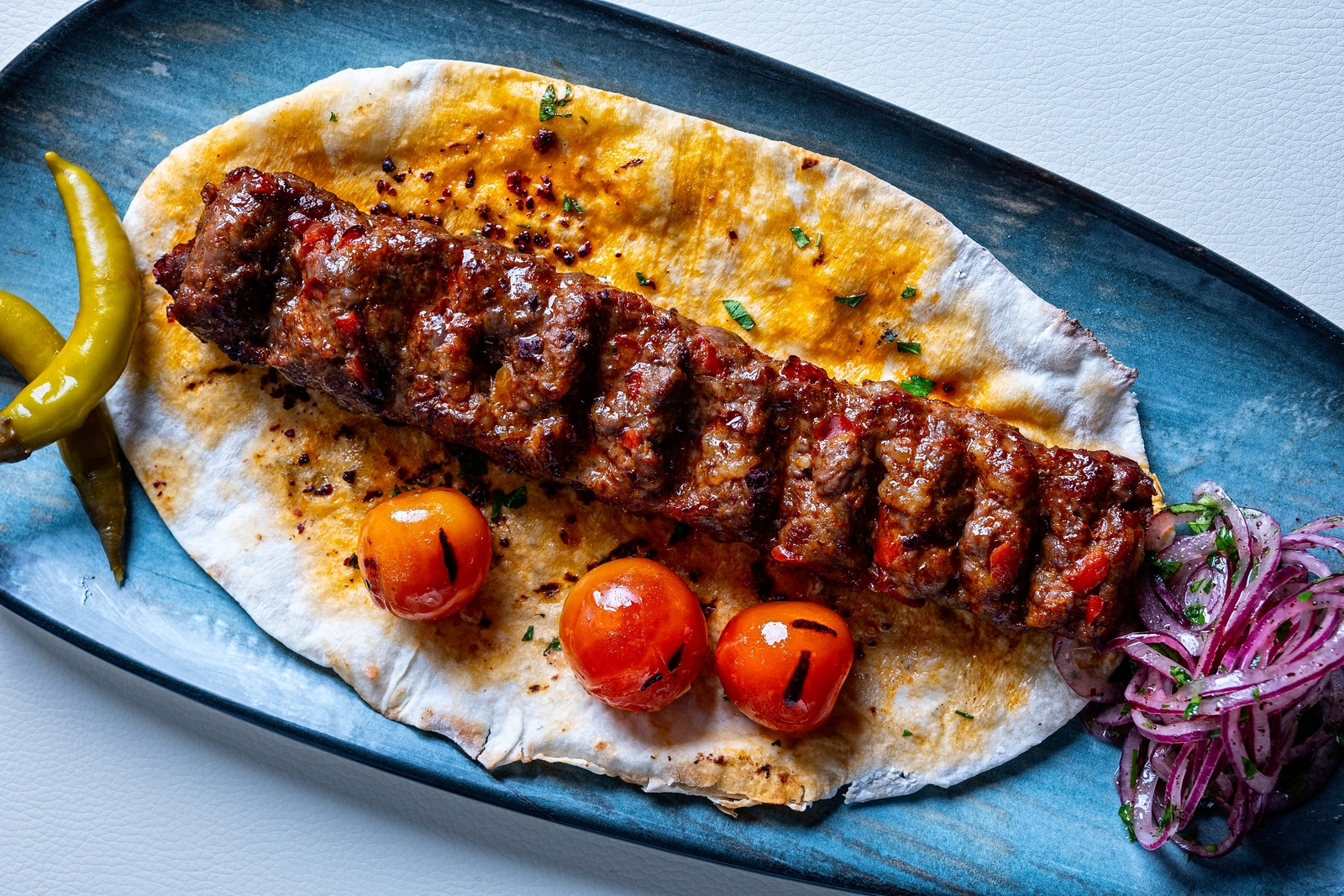
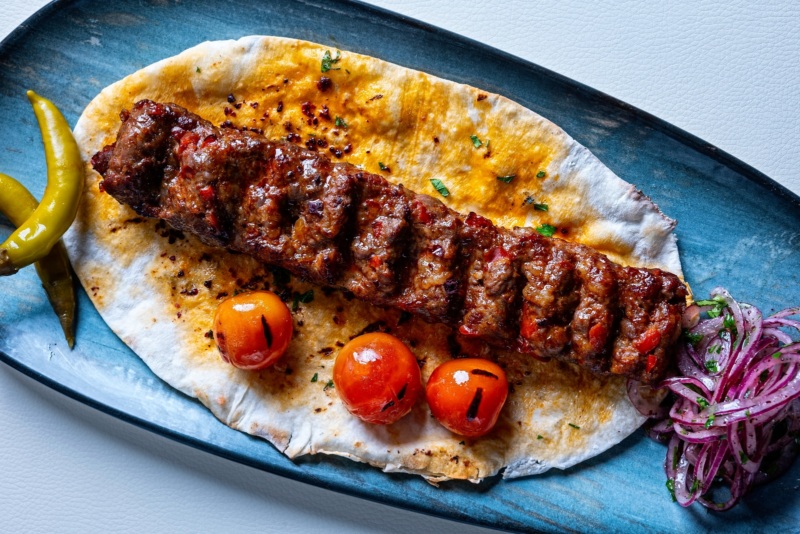
The impact in terms of cuisine has been immediate and should be experienced first-hand: “We picked different foods from different parts of the continent. And we’re experimenting with our weekly specials,” says Azali. Even though it’s tempting to order as much food as possible, Azali advises guests to pace themselves and start with a little bit of food first, before placing additional orders afterwards if the mood takes them.
When visiting, try one of Azali’s favorite dishes, the kabob torsh which hails from the Northern region of Iran and incorporates walnuts, cilantro, garlic, onion, and pomegranate. He’s also fond of the Greek chicken served with lemony potato that is cooked in the chicken juices. Meanwhile, Gulyiyen isn’t afraid to dip into his repertoire for specialist regional fare like kokoreç, the famed Anatolian and Balkan dish of suckling lamb intestines wrapped around sweetbreads and grilled horizontally over charcoal. Crucially, the bread is made fresh daily and arrives at the table with any of their rips and dips – it’s the kind of food that does satisfies slowly and subtly, but completely. A personal favorite from my visit was the kotlet-e-kadoo, a zucchini fritter.
Following acclaim in D.C.’s restaurant media (including a rave review from The Washington Post’s restaurant critic, Tom Sietsema) the risk seems to have been worth it, “I wanted to leave something behind. It was worth it for me and John,” Azali says affectionately. “Without [John and] most of the staff, this wouldn’t have happened. We’ve been blessed by the staff; they’ve been very good and I’m really lucky to have the staff that I have. The people I have are wonderful.”
Namak is open for dinner Tuesday-Thursday and Sunday from 5-9 p.m, Friday-Saturday from 5-10 p.m.
Cornelia Poku is a food writer and content creator based in D.C. and Maryland. Her work has been published in City Cast, Business Insider and WAMU. Follow her on X, Instagram or TikTok. Follow Resy, too.
Discover More
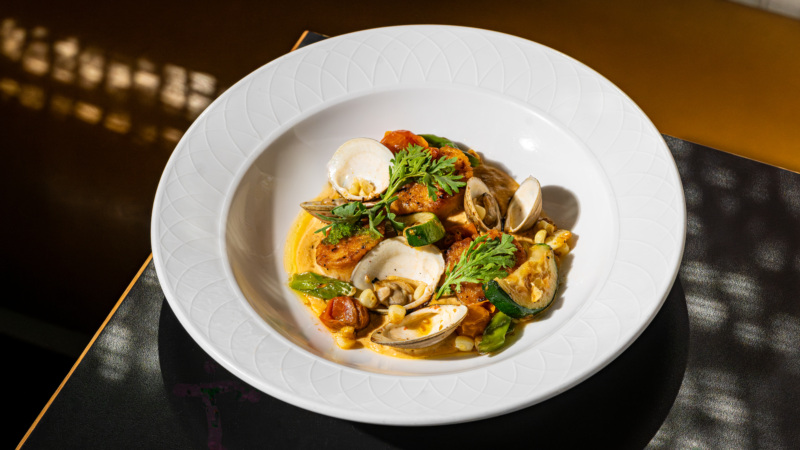
Stephen Satterfield's Corner Table




